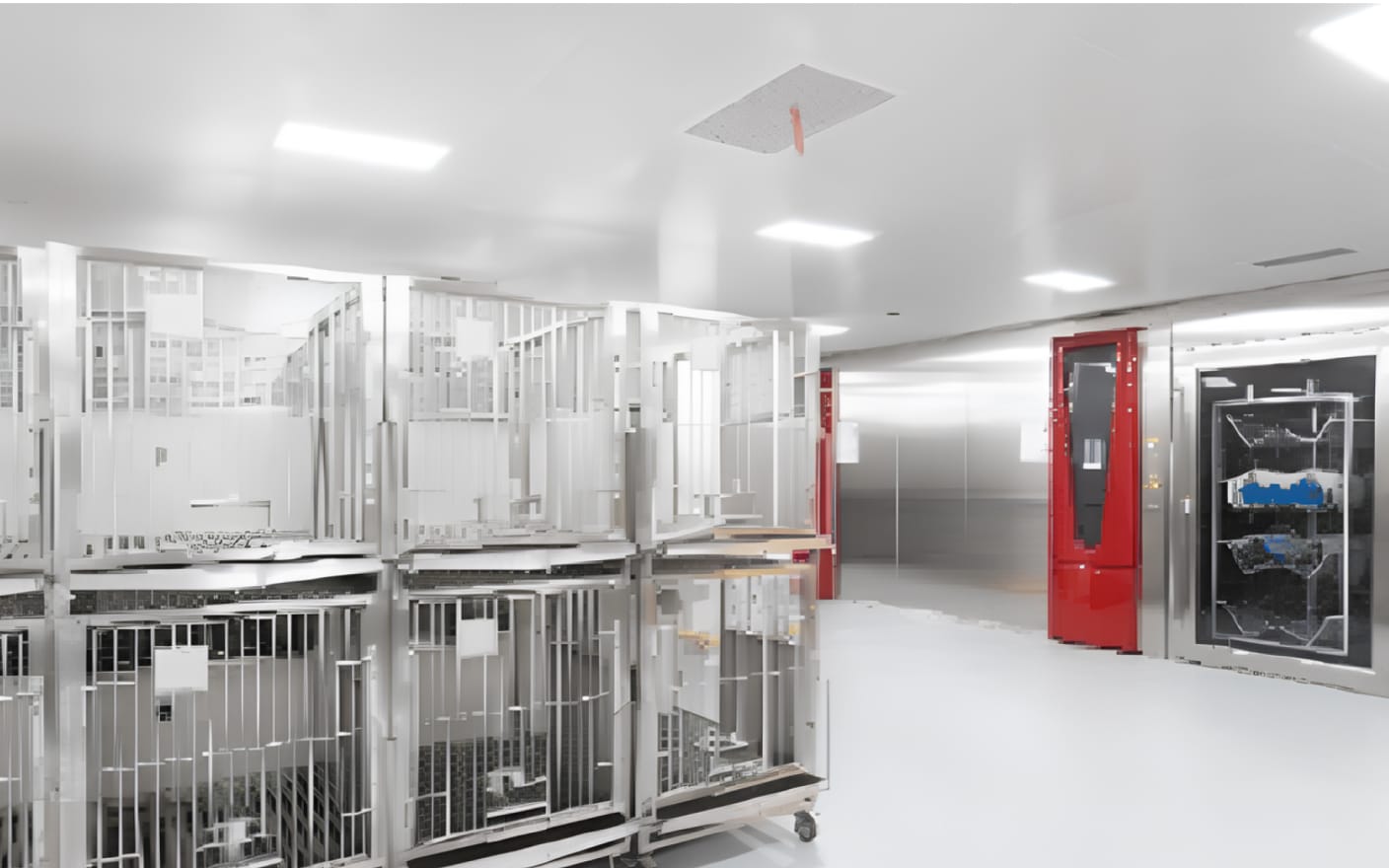Oligonucleotides (Oligos, OLIGOs) represent a rapidly evolving class of drugs poised to drive the third wave of new drug research and development, following small molecule and antibody drugs. As the landscape of ON drugs continues to evolve, their therapeutic applications have expanded beyond liver targeting, with significant advancements observed in the fields of the Central Nervous System (Central nervous system, CNS) and Ophthalmology. Notably, approximately 14% of OLIGOs currently target the CNS1.
A landmark in this modality is Nusinersen, the first commercially available ON drug targeting the CNS, approved by the FDA for the treatment of Spinal Muscular Atrophy. With reported annual sales of $1.79 billion in 2022, Nusinersen has ascended to the Top 100 Global Drug Sales ranking, emerging as the highest-selling ON drug. Its success has bolstered the confidence of researchers in the potential of ON drugs for CNS applications.
A survey of ON drugs either in the clinical stage or already marketed for CNS indications has been summarized in Table 1. As indicated in Table 1, all ON drugs are antisense oligonucleotides (ASOs), except for Analym's ALN-APP, which employs small interfering RNA (siRNA) technology. Notably, both siRNA and ASO are administered intrathecally Intrathecal injection), which was highlighted as the primary route for CNS-targeted ON delivery. This article focuses on a preclinical pharmacokinetic study of Nusinersen to provide a comprehensive analysis of the pharmacokinetic characteristics of intrathecal administered antisense oligonucleotides, which also elucidates key pharmacokinetic considerations relevant to intrathecal antisense oligonucleotides and illuminating their potential for CNS-targeted therapeutics.
Drug name | Molecule type | Indications | Development phase | Route of administration |
Nusinersen | ASO | Spinal Muscular Atrophy | Marketed | Intrathecal administration |
Tofersen | ASO | Amyotrophic Lateral Sclerosis | Marketed | |
ION363 | ASO | Amyotrophic Lateral Sclerosis | Phase 3 | |
Zilganersen | ASO | Alexander disease | Phase 3 | |
Tominersen | ASO | Huntington's Disease | Phase 3 | |
IONIS-MAPTRx/BIIB080 | ASO | Alzheimer's Disease | Phase 2 | |
ION859/BIIB094 | ASO | Parkinson's Disease | Phase 2 | |
STK-001 | ASO | Dravet Syndrome | Phase 2 | |
GTX-102 | ASO | Angelman Syndrome | Phase 1/2 | |
ION582 | ASO | Angelman Syndrome | Phase 1/2 | |
WVE-003 | ASO | Huntington's Disease | Phase 1/2 | |
WVE-004 | ASO | Amyotrophic Lateral Sclerosis | Phase 1/2 | |
ION541/BIIB105 | ASO | Amyotrophic Lateral Sclerosis | Phase 1 | |
ION260/BIIB132 | ASO | Spinocerebellar Ataxia Type 3 | Phase 1 | |
ION464/BIIB101 | ASO | Multiple System Atrophy, Parkinson's Disease | Phase 1 | |
ALN-APP | siRNA | Alzheimer's Disease | Phase 1 |
Table 1. Summary of the CNS-targeted Oligonucleotide drugs launched and under clinical development3 Drug name
Concept of intrathecal administration
Intrathecal drug administration refers to the administration method of introduction of drugs directly into the cerebrospinal fluid by injection into the subarachnoid space of the spinal cord bypassing the blood-brain barrier. This section will introduce the production and circulation of cerebrospinal fluid (CSF), further elaborate on the rationality of choosing intrathecal administration of antisense oligonucleotides, and the pharmacokinetic characteristics of ASOs after intrathecal administration.
a. The production and circulation of CSF
In general, after systemic administration, the drug is distributed throughout the body along with blood circulation, and the plasma concentration-time curve needs to be paid close attention to. For those drugs administered intrathecally, the drugs will be injected into the cerebrospinal fluid rather than the blood, so the concentration-time curve in CSF is the emphasis. To better understand the pharmacokinetic characteristics of antisense oligonucleotides after intrathecal administration, it is necessary to learn about the mechanism of production and circulation of cerebrospinal fluid. The central nervous system is a relatively closed system due to the presence of the blood-brain barrier, in which the cerebrospinal fluid is filled throughout the entire system. After the drugs enter the cerebrospinal fluid, it follows the circulation of the cerebrospinal fluid and exerts its effects.
The cerebrospinal fluid circulation is known as the third circulation of the human body (Figure 1) 4. Classic circulation theory holds that CSF is mainly produced by the choroid plexus of the lateral ventricles and the fourth ventricle. Cerebrospinal fluid flows from the lateral ventricle through the third ventricle, then the fourth ventricle to the cerebellomedullary cistern in the posteroinferior part of the brain. Then CSF flows into the subarachnoid space surrounding the brain and spinal cord. Finally, CSF penetrates the dural sinuses (mainly the superior sagittal sinus) through the arachnoid granulations and returns to the blood.

Figure 1. The production and circulation of CSF 5
b. Why are Oligonucleotide drugs targeting the CNS chosen intrathecal injection?
Due to its inherent properties such as its large molecular weight and negative charge, it is extremely difficult for oligonucleotide drugs to pass through the blood-brain barrier and reach the central nervous system. Nano-formulated or conjugated oligonucleotide drugs targeting CNS introduce non-pharmacodynamic structures that not only have potential safety risks, but will also prolong the early development cycle of oligonucleotide drugs.
Intrathecal injection could deliver oligonucleotide drugs directly into CSF, bypassing the blood-brain barrier. The method also greatly lowers the administered dosage and reduces systemic adverse effects. In addition, the long half-life of oligonucleotide drugs in the central nervous system also greatly reduces the frequency of intrathecal administration, which is beneficial to improving patient compliance 6.
c. In vivo disposition process for Oligonucleotide drugs given intrathecally
After intrathecal administration, OLIGOs participate in the cerebrospinal fluid circulation. Part of OLIGOs are taken up by brain tissue and there is a dynamic balance of OLIGOs between brain tissue and cerebrospinal fluid. Part of the oligonucleotide drug, with the cerebrospinal fluid circulation, is eliminated from the central nervous system and enters the blood circulation, which is taken up by peripheral tissues to form a dynamic balance between peripheral tissues and blood. Due to the existence of the blood-brain barrier, it is difficult for OLIGOs that enter the blood circulation to re-enter the central nervous system.

Figure 2. The simulated dynamic process of distribution and elimination of ASO drugs entering the brain 7
The pharmacokinetic characteristics of antisense oligonucleotides after intrathecal administration
Nusinersen is the first-approved oligonucleotide drug administered intrathecally, its pharmacokinetics will help to advance preclinical pharmacokinetic research on intrathecal ASOs.
a. Disposition characteristics of ASOs administered intrathecally in the central nervous system
Nusinersen administered intrathecally enters the cerebrospinal fluid circulation directly without an absorption process. Peak CSF concentrations of Nusinersen were observed within 15 minutes post intrathecal dosing, which rapidly declined (up to 24-48 hours post-injection). Following the initial rapid distribution phase, its elimination from the CSF was much slower with an observed elimination half-life of approximately 11 days. Basically, the distribution was completed within 12 hours post-dose, and AUC values of CSF indicated that the majority of CSF exposure was during the first 12 hours post-dosing. In addition to uptake by CNS tissue, some drugs entered into the blood circulation. Since the drug first went through CSF circulation and then into the blood circulation, the peak time of Nusinersen in plasma (4 hours) lagged far behind that in cerebrospinal fluid. And there was a significant absorption phase based on the plasma concentration-time curve. The plasma concentrations of Nusinersen were also much lower than those in CSF, and the Cmax value of plasma was 1/1000 of that in CSF.
Parameter | IT (bolus, 3 mg) | |
Cerebrospinal fluid | Plasma | |
Tmax (h) | 0.25 (0.25-0.50)* | 4 (2-8)* |
AUC0-12(μg·h/mL) | 1468 | ND |
AUC0-24(μg·h/mL) | 1641 | 4.50 |
AUC0-48(μg·h/mL) | 1734 | ND |
Cmax (μg/mL) | 592 | 0.455 |
Table 2. Nusinersen PK parameters in adult monkeys 2
*: Median (range of values). Values not marked with * in the table are mean values.
ND = No data.
Here below are the suggestions for oligonucleotide drugs administered intrathecally based on Nusinersen’s distribution profile in cerebrospinal fluid and plasma.
Considering the long half-life in cerebrospinal fluid (CSF) and plasma post intrathecal dosing, the sampling points of CSF and plasma should appropriately last after 24 h post-dosing to better delineate the pharmacokinetic profile.
Identifying abnormal data by focusing on significant concentration differences between cerebrospinal fluid and plasma.
Estimating the Initial drug concentration in CSF using the dose level divided by the estimated CSF volume of the dosed animal species. Since the central nervous system is closed and bounded, the cerebrospinal fluid volume in different individuals (the same species) is similar. So, the initial drug concentration can be roughly estimated by the dose and the volume of cerebrospinal fluid. Take Nusinersen as an example, the dosage is 3 mg/monkey and the CSF volume is approximately 15 mL in adult monkey8, it can be estimated that its initial drug concentration in CSF is approximately 200 µg/mL (dose / CSF volume). The measured Cmax value was 592 µg/mL, which is similar to the estimated initial drug concentration.
The tissue distribution of Nusinersen was evaluated in conjunction with a combined toxicity study. After intrathecal dosing, the highest CNS tissue concentrations were measured in the lumbar spinal cord followed by the thoracic and cervical spinal cord regions and the frontal and temporal cortex brain regions. In addition, the dosed Nusinersen that entered the blood circulation was rapidly distributed into the liver and kidney. As shown in Table 3, the drug concentrations in the kidney cortex were similar to that in the lumbar spinal cord, whose concentration was the highest in the CNS tissue, reaching 61.3 μg/g. Long elimination half-lives of Nusinersen in tissues were observed post-intrathecal dosing. On Day 365 post intrathecal dosing, 4.34 μg/g of Nusinersen was still present in the lumbar spinal cord with an elimination half-life in CNS tissues up to 139 ± 54 days.
Tissue | Day 29 | Day 365 |
Lumbar spinal cord | 91.4 | 4.34 |
Thoracic spinal cord | 35.8 | 1.96 |
Cervical spinal cord | 19.9 | 1.86 |
Temporal cortex | 16.6 | 2.07 |
Frontal cortex | 13.6 | 1.96 |
Brain stem | 10.2 | 0.472 |
Cerebellum | 3.74 | 1.09 |
Kidney cortex | 61.3 | 0.652 |
Liver | 4.74 | BLQ |
Table 3. Multiple IT doses of Nusinersen to preclinical adult monkeys 2
*: μg/g. After 4 weekly 1 mg doses in adult monkeys (total dose = 4 mg over 3 weeks), collect tissues on Day 29, 85, 183, 253, and 365.
BLQ: below the limit of quantification (< 0.015 µg/g).
Here below is the consideration for oligonucleotide drug administered intrathecally based on the tissue distribution and elimination characteristics of Nusinersen.
For the study of tissue distribution of oligonucleotide drugs administered intrathecally, it would be better to focus on the CNS tissues, by collecting brain and spinal cord tissues from various regions for analysis. This approach will enable a more comprehensive evaluation of drug distribution.
In addition to brain tissue, liver and kidney tissues are expected to be the major organs of drug distribution. Therefore, both liver and kidney need to be investigated.
The tissue collection period should be extended appropriately (even up to one year).
b. Elimination of antisense oligonucleotides in system circulation after intrathecal administration
After antisense oligonucleotides enter the blood circulation, their metabolism and excretion are similar to those of systemic administration, mainly metabolized by nucleases and excreted by the kidneys.
Based on the above characteristics, it is recommended that:
For intrathecal oligonucleotide drugs, the research methods for studying their pharmacokinetic characteristics in systemic circulation are similar to those used for other systemic administered oligonucleotide drugs.
In addition to routine metabolite identification in plasma, liver, and kidney, since it targets the CNS, metabolite identification in brain tissue and CSF may be added as appropriate.
For oligonucleotide drugs in the early development stage, their stability in brain tissue homogenate can be considered.
c.PK/PD study of antisense oligonucleotides administered intrathecally
Since oligonucleotide drugs are rapidly cleared in the cerebrospinal fluid, the PK-PD research on CNS-targeted oligonucleotide drugs is mainly based on the dose-effect relationship between drug concentration and pharmacodynamic biomarkers in CNS tissues. Nusinersen's PK-PD study is the same. By establishing the dose-effect relationship between drug concentration and pharmacodynamic biomarkers in CNS tissue, the corresponding effective concentration and dose were calculated. (Figs. 3) 9 .

Figure 3. The study on Nusinersen concentration and pharmacodynamic biomarkers in mouse thoracic spine tissue
* FL SMN refers to trans including exon 7 (higher value represents better efficacy), and Δ7 SMN refers to trans excluding exon 7 (lower value represents better efficacy), both are related efficacy biomarkers.
For intrathecal administration, based on the guidance of “Estimating the Maximum Safe Starting Dose in Initial Clinical Trials for Therapeutics in Adult Healthy Volunteers”, dose conversion between species is based on the volume of cerebrospinal fluid rather than conventional body surface area or equivalent free systemic exposure conversion. Take Nusinersen as an example (Table 4), based on pharmacodynamic and toxicological findings, the preclinical dosage of Nusinersen (combined with NOAEL (No Observed Adverse Effect Level) and efficacy considerations) was set at 1 mg/monkey, and the starting dose for the first human clinical trial was 1 mg/person, where the human equivalent dose and the safety threshold were considered. Based on the ratio of cerebrospinal fluid volumes between humans and monkeys (human CSF volume is 150 mL and monkey is 15 mL 8), the conversion factor from preclinical doses to human equivalent doses is 10.
Preclinical dose | Human equivalent dose | Safety threshold | Phase I starting dose |
1 mg/Dose | 10 mg/Dose | 10 | 1 mg/dose |
Table 4. Nusinersen first-in-human dose conversion (escalation experiment)
Conclusion
In summary, this article has provided an overview of Nusinersen, the pioneering antisense oligonucleotide targeting the central nervous system, and has gathered its preclinical pharmacokinetics studies. By delving into the intricacies of Nusinersen's pharmacokinetic profile, this article aims to offer valuable insights to researchers in understanding the essential aspects of preclinical pharmacokinetic research and experimental design concerning intrathecal oligonucleotide drugs.
Intrathecal drug delivery presents technical challenges 10. However, it holds immense promise in central nervous system drug research, which has witnessed a surge in interest in recent years. The growing demand for intrathecal administration techniques underscores the importance of advancing this field. WuXi AppTec DMPK has developed a comprehensive intrathecal drug delivery and cerebrospinal fluid collection technology, and establishes a robust platform for intrathecal and intraventricular drug delivery. Leveraging our expertise in nervous system drug development, WuXi AppTec DMPK is committed to facilitating our customers' endeavors in advancing new drug research and development targeting the central nervous system. We remain dedicated to supporting innovative solutions that accelerate progress in this critical area of therapeutics.
Talk to a WuXi AppTec expert today to get the support you need to achieve your drug development goals.
Author: Jiaqi Yuan, Lijuan Hou, Yan Pan, Jing Jin
Committed to accelerating drug discovery and development, we offer a full range of discovery screening, preclinical development, clinical drug metabolism, and pharmacokinetic (DMPK) platforms and services. With research facilities in the United States (New Jersey) and China (Shanghai, Suzhou, Nanjing, and Nantong), 1,000+ scientists, and over fifteen years of experience in Investigational New Drug (IND) application, our DMPK team at WuXi AppTec are serving 1,600+ global clients, and have successfully supported 1,500+ IND applications.
Reference
1.Moumné L, Marie AC, Crouvezier N. Oligonucleotide Therapeutics: From Discovery and Development to Patentability. Pharmaceutics. 2022;14(2).
2.FDA and EMA Review.
3.Goto A, Yamamoto S, Iwasaki S. Biodistribution and delivery of oligonucleotide therapeutics to the central nervous system: Advances, challenges, and future perspectives.
4.Ray LA, Heys JJ. Fluid flow and mass transport in brain tissue. Fluids. 2019;4(4).
5.http://en.wikipedia.org/wiki/Cerebrospinal_fluid.
6.Khorkova O, Wahlestedt C. Oligonucleotide therapies for disorders of the nervous system.
7.Luu KT, Norris DA, Gunawan R, Henry S, Geary R, Wang Y. Population Pharmacokinetics of Nusinersen in the Cerebral Spinal Fluid and Plasma of Pediatric Patients With Spinal Muscular Atrophy Following Intrathecal Administrations. J Clin Pharmacol. 2017;57(8):1031-1041.
8.Sadekar SS, Bowen M, Cai H, et al. Translational Approaches for Brain Delivery of Biologics via Cerebrospinal Fluid. Clin Pharmacol Ther. 2022;111(4):826-834.
9.Rigo F, Chun SJ, Norris DA, et al. Pharmacology of a central nervous system delivered 2′-O-methoxyethyl- modified survival of motor neuron splicing oligonucleotide in mice and nonhuman primates. J Pharmacol Exp Ther. 2014;350(1):46-55.
10.Sullivan JM, Mazur C, Wolf DA, et al. Convective forces increase rostral delivery of intrathecal radiotracers and antisense oligonucleotides in the cynomolgus monkey nervous system. J Transl Med. 2020;18(1):1-17.
Related Services and Platforms




-

 In Vivo PharmacokineticsLearn More
In Vivo PharmacokineticsLearn More -

 Novel Drug Modalities DMPK Enabling PlatformsLearn More
Novel Drug Modalities DMPK Enabling PlatformsLearn More -

 Therapeutic Areas DMPK Enabling PlatformsLearn More
Therapeutic Areas DMPK Enabling PlatformsLearn More -

 Rodent PK StudyLearn More
Rodent PK StudyLearn More -

 Large Animal (Non-Rodent) PK StudyLearn More
Large Animal (Non-Rodent) PK StudyLearn More -

 Clinicopathological Testing Services for Laboratory AnimalsLearn More
Clinicopathological Testing Services for Laboratory AnimalsLearn More -

 High-Standard Animal Facilities and Animal WelfareLearn More
High-Standard Animal Facilities and Animal WelfareLearn More -

 Preclinical Formulation ScreeningLearn More
Preclinical Formulation ScreeningLearn More -

 PROTAC DMPK ServicesLearn More
PROTAC DMPK ServicesLearn More -

 ADC DMPK ServicesLearn More
ADC DMPK ServicesLearn More -

 Oligo DMPK ServicesLearn More
Oligo DMPK ServicesLearn More -

 PDC DMPK ServicesLearn More
PDC DMPK ServicesLearn More -

 Peptide DMPK ServicesLearn More
Peptide DMPK ServicesLearn More -

 mRNA DMPK ServicesLearn More
mRNA DMPK ServicesLearn More -

 Covalent Drugs DMPK ServicesLearn More
Covalent Drugs DMPK ServicesLearn More
Stay Connected
Keep up with the latest news and insights.



















